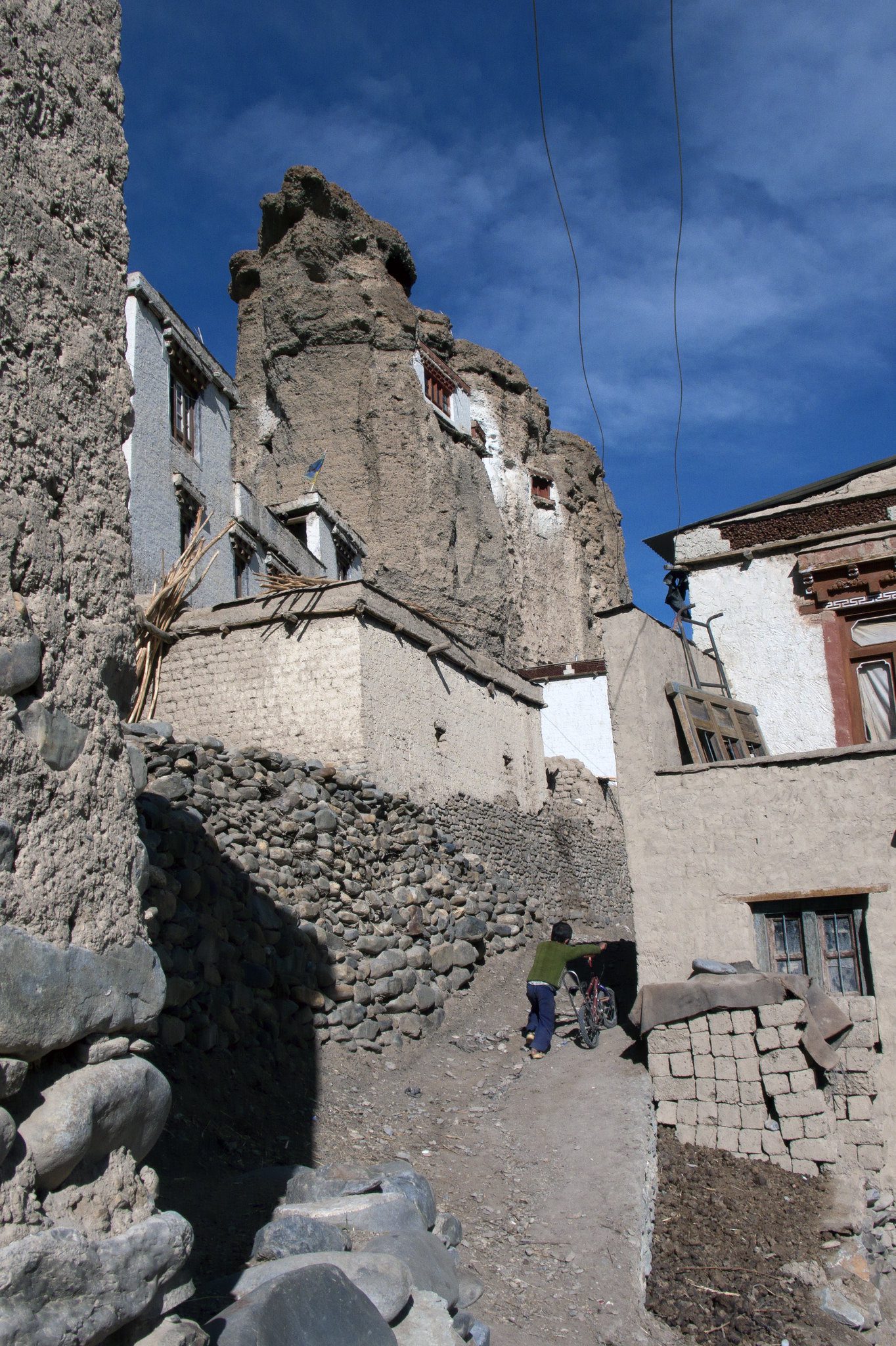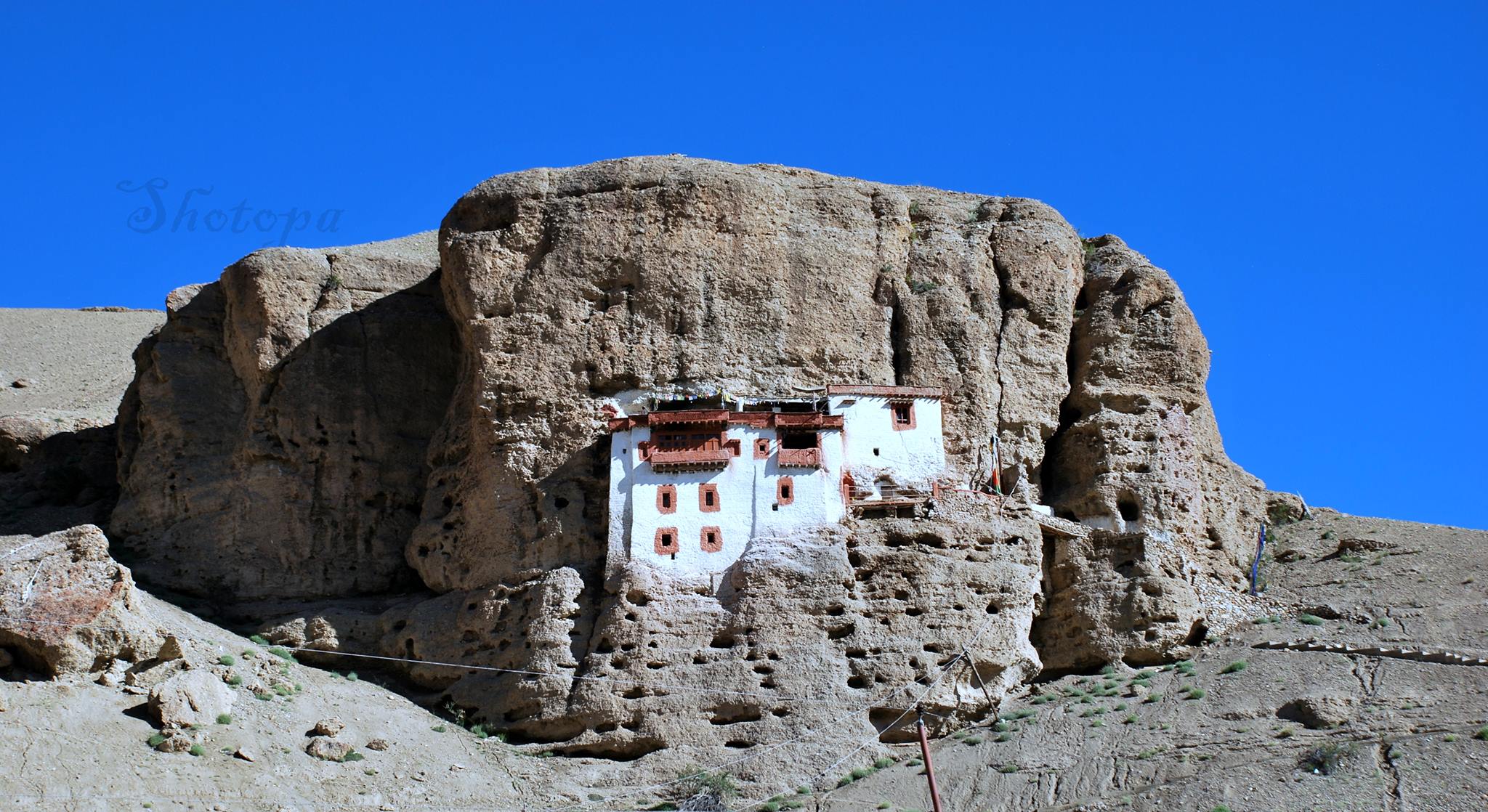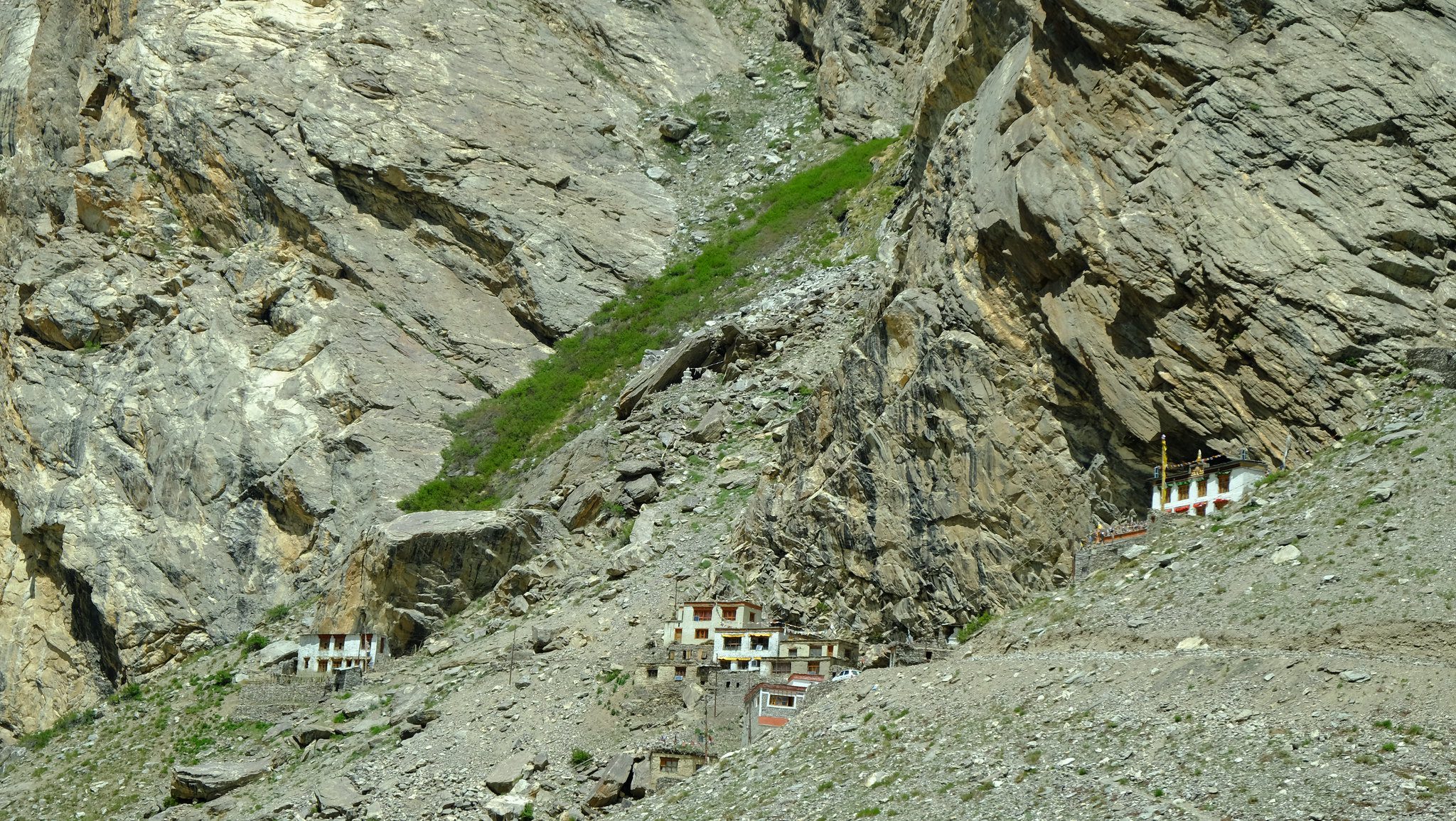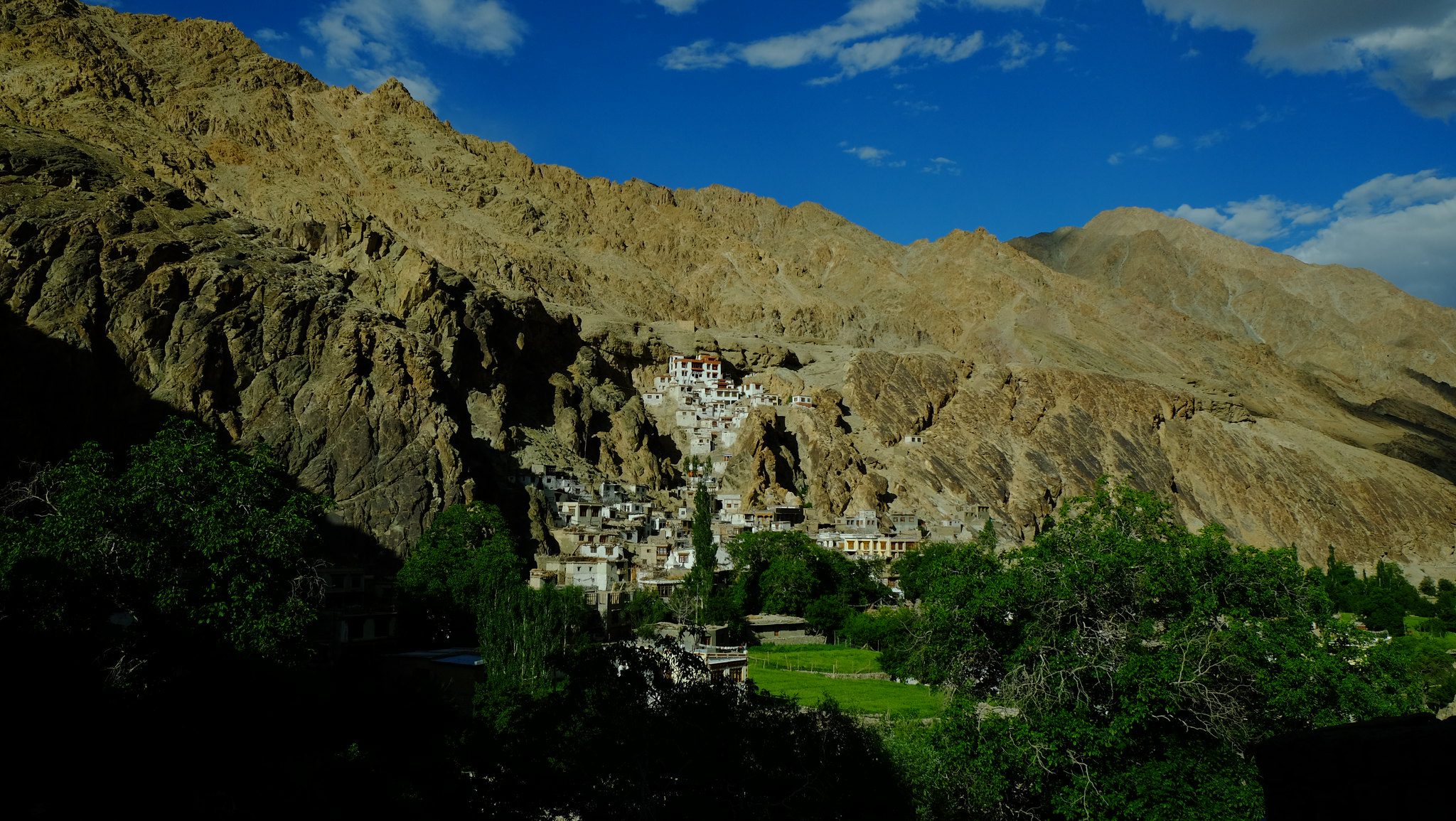The rugged beauty of Ladakh, India’s Himalayan wonderland, is well-known among adventurers and spiritual seekers alike. But beyond its landscapes and monasteries lies a hidden world of ancient cliffside dwellings—the Sky Caves of Ladakh. Perched on rocky ledges and tucked into sheer cliffs, these ancient sites are part of Ladakh’s most intriguing mysteries. In this guide, we’ll journey through the history, trekking routes, and cultural significance of these unique dwellings, focusing on incredible cave monasteries like Rgyal Cave Monastery, Shargole Cave Monastery, Dzongkul Gompa, Phuktal Gompa, and Skurbuchan Monastery.
Discovering the Enigmatic Sky Caves of Ladakh
The History Behind Ladakh’s Cliffside Caves
Ladakh’s sky caves are ancient dwellings and meditation sites created by Buddhist monks, hermits, and ancient civilizations over a thousand years ago. These cliffside sanctuaries, such as the Rgyal Cave Monastery and Phuktal Gompa, are known for their high-altitude isolation and historic significance. Constructed as places of meditation, safety, and spiritual pursuit, these caves offer a glimpse into the remote monastic life of the past.

Customer Testimonial:
“Visiting these sky caves felt like stepping back in time. The history surrounding Rgyal Cave Monastery was simply captivating.”
– Isabella Morales, Spain, Archaeologist
The Phuktal Gompa is among the most famous of these sites, located in the Zanskar Valley and accessible only via trekking. Its intricate architecture, with rooms carved into the rock, reveals ancient engineering techniques and the monks’ commitment to spiritual isolation.
The Mystery of the Sky Caves’ Location and Structure
Why were these sky caves built at such dizzying heights? The locations of these caves, often 13,000 feet above sea level or more, were likely chosen for their solitude, providing ideal conditions for meditation and spiritual practices. Monks and pilgrims who journeyed to these heights found a sanctuary where they could devote themselves to prayer, study, and enlightenment without distraction.
- Shargole Cave Monastery: With its unique wooden balcony jutting out from a sheer cliff, this monastery is a prime example of Ladakh’s cliffside architecture.
- Dzongkul Gompa: A lesser-known yet equally mystical cliffside cave known for its beautiful murals and artifacts.
- Rgyal Cave Monastery: A quiet, remote monastery with a breathtaking view of Ladakh’s valleys, where monks have practiced meditation for centuries.
The Journey to Ladakh’s Hidden Cliffside Dwellings
Trekking Routes to the Sky Caves of Ladakh
The journey to these sky caves is as awe-inspiring as the caves themselves. Most of these routes are high-altitude treks, requiring careful planning and acclimatization. To reach Phuktal Gompa in Zanskar Valley, trekkers often start from Padum, the district headquarters, and hike along rugged trails that offer views of the remote Himalayas. Each route varies in difficulty and can take several days, depending on the weather and trail conditions.

| Monastery |
Location |
Approximate Trek Duration |
| Rgyal Cave Monastery |
Wakha, Ladakh |
1-2 days |
| Shargole Cave Monastery |
Shargole, Ladakh |
1 day |
| Dzongkul Gompa |
Zanskar Valley |
2-3 days |
| Phuktal Gompa |
Zanskar Valley |
3-4 days |
| Skurbuchan Monastery |
Skurbuchan Village |
1-2 days |
Customer Testimonial:
“Trekking to Phuktal Gompa was an unforgettable experience. The Zanskar Valley scenery and the spiritual ambiance of the monastery left me speechless.”
– Liam Carter, UK, Environmental Scientist
Preparing for High-Altitude Trekking in Ladakh
Trekking in Ladakh requires special preparation due to the high-altitude terrain and fluctuating weather conditions. Acclimatization is key for preventing altitude sickness, and trekkers should spend at least a day adjusting to the elevation in towns like Leh before embarking on these treks. Ensure you pack warm clothing, plenty of water, energy snacks, and a basic first aid kit.

The Unique Cultural Heritage of Ladakh’s Sky Caves
Influence of Buddhism on Ladakh’s Cliffside Dwellings
The caves’ historical significance is closely tied to Buddhism. Ladakh’s cliffside monasteries, especially places like Rgyal Cave Monastery and Phuktal Gompa, were often used by Buddhist monks seeking isolation to meditate and study sacred texts. These caves, adorned with ancient murals and relics, have preserved Ladakh’s Buddhist heritage for centuries.
Preservation Efforts for Ladakh’s Ancient Sites
As tourism in Ladakh grows, there are increased efforts to preserve these cultural treasures. Local authorities and cultural organizations are working to protect these monasteries from the effects of natural erosion and increased foot traffic. Sustainable trekking practices, such as following designated trails and respecting local customs, help safeguard the integrity of these sacred spaces.
Customer Testimonial:
“It’s great to see preservation efforts around these ancient sites. Trekking responsibly allows future generations to experience this beauty too.”
– Emily Johnson, USA, Conservationist
Stories and Legends Surrounding the Sky Caves
Legends of miraculous occurrences and spiritual events add an air of mystery to the sky caves. The Phuktal Gompa is said to have been founded by the Buddhist scholar Phakpa Sherab Zangpo, who meditated here for years, attracting followers who believed the caves held powerful spiritual energy. The Dzongkul Gompa is also associated with a great Buddhist teacher, Naropa, who meditated there, leaving his handprints on the rocks as proof of his devotion.

Essential Tips for Visiting Ladakh’s Sky Caves
Planning Your Trip to Ladakh’s Cliffside Caves
Timing is essential when planning a trip to Ladakh’s cliffside monasteries. The best months are between June and September, when the weather is milder, and trekking routes are more accessible. Always research whether a guide is required for your trek, as some trails can be challenging to navigate.
Sustainable Trekking Practices in Ladakh
With increased tourism, it’s important to practice sustainable trekking to minimize environmental impact. Bring reusable water bottles, avoid littering, and respect the tranquility of these sacred sites. Ladakh’s sky caves are not only historical landmarks but are also places of worship and pilgrimage.
Safety and Health Considerations for High-Altitude Treks
Altitude sickness is a common issue in Ladakh. Symptoms can include headaches, dizziness, and nausea, which may require descending to a lower altitude. It’s advisable to carry basic medication and avoid overexertion during treks.

Customer Testimonial:
“The high-altitude tips helped me prepare. It was a challenging trek, but reaching the Dzongkul Gompa was worth every step.”
– Alessandro Russo, Italy, Software Engineer
Frequently Asked Questions (FAQs) About Ladakh’s Sky Caves
What are the sky caves of Ladakh, and why are they important?
These cliffside dwellings are ancient Buddhist meditation sites known for their unique architecture and historical significance.
How difficult is the trek to Ladakh’s cliffside dwellings?
Trekking difficulty varies, but most routes require moderate to high-altitude trekking experience.
When is the best time to explore Ladakh’s ancient caves?
The best time is between June and September when conditions are suitable for trekking.
Do I need a guide for trekking to Ladakh’s cliffside caves?
While some routes are manageable independently, a guide is recommended for remote areas like Phuktal Gompa.
What should I pack for a high-altitude trek in Ladakh?
Bring warm clothing, trekking poles, plenty of water, and altitude sickness medication.
Conclusion: Unraveling the Mysteries of Ladakh’s Cliffside Dwellings
Trekking to Ladakh’s sky caves offers more than breathtaking views—it’s an invitation to journey back through time, connecting with the spiritual legacy of the Himalayas. As these monasteries stand silently on the cliffs, they continue to whisper the stories of ancient monks, spiritual seekers, and legendary teachers. A visit to Rgyal Cave Monastery, Shargole Cave Monastery, Dzongkul Gompa, Phuktal Gompa, or Skurbuchan Monastery is a truly transformative experience for those who seek both adventure and introspection.
Mysteries of the Sky Caves
Mysteries of the Sky Caves | The journey through Ladakh mirrors the very essence of unraveling unknown horizons, as its dramatic landscapes and unique cultural identity awaken the deepest sense of wonder and exploration. Mysteries of the Sky Caves delves into this realm where inner peace intertwines with the wild, untouched beauty of Ladakh. From the snow-capped peaks to the serene monasteries, every step in Ladakh is a step toward self-discovery. The mountains, ancient paths, and unspoken mysteries stretch before travelers, offering a meditative experience where each encounter feels both effortless and transformative. Whether it’s trekking across remote valleys or sitting quietly beside a sacred lake, Ladakh invites those who seek a deeper connection to the natural and spiritual world.

Mysteries of the Sky Caves
The monasteries of Ladakh stand as living monuments to the region’s profound spiritual heritage. With origins dating back over a thousand years, these ancient structures are both places of worship and repositories of art, culture, and wisdom. Hemis Monastery, one of the largest in Ladakh, is renowned for its annual festival, featuring colorful mask dances performed by monks. The history of these monasteries reflects Ladakh’s role as a crossroads between India, Tibet, and Central Asia, where religious and cultural influences have intertwined over the centuries.
The Tibetan Buddhist influence is especially evident in the architecture and daily life of the monks. Prayer wheels, intricate murals, and the soft hum of chants fill the air as visitors explore the monastery grounds. Each monastery, from the remote Lamayuru to the awe-inspiring Thiksey, offers a window into the spiritual heart of Ladakh. These centers of meditation, learning, and community life continue to thrive, preserving traditions that have shaped Ladakh for generations.
Why Visit Ladakh for Mysteries of the Sky Caves?
Ladakh is a destination that transcends mere travel. It offers a journey that touches both the outer and inner landscapes, making it a perfect setting for those who seek to unravel their own unknown horizons. The region’s breathtaking scenery—from towering mountain ranges to hidden valleys—provides not just an escape but a space for contemplation and growth. Ladakh’s culture, deeply rooted in Buddhist practices, invites visitors to reflect on their own lives and the world around them.
Ladakh’s people, known for their warmth and hospitality, add to the richness of the experience. Villages like Sumda Chun and the legendary Nubra Valley introduce travelers to a way of life that is intricately connected to nature and spirituality. Staying in local homestays allows for immersive experiences where one can learn about traditional Ladakhi customs, share meals made from local produce, and participate in community rituals.

Beyond its natural beauty, Ladakh offers a unique opportunity to explore oneself. The vastness of the region’s plateaus and the clarity of its skies seem to mirror the vastness of the human spirit. Whether it’s standing atop a mountain pass at 18,000 feet or meditating in a centuries-old monastery, Ladakh helps unravel the unknown horizons within each traveler.
Finding the Best Mysteries of the Sky Caves in Ladakh
Finding the best places in Ladakh to experience “Mysteries of the Sky Caves” involves venturing off the beaten path. Ladakh’s lesser-known treks, such as those leading to secluded monasteries or high-altitude lakes, offer unparalleled opportunities for solitude and reflection. The Markha Valley trek, for instance, takes travelers through verdant valleys, ancient villages, and high-altitude passes, allowing for both physical and spiritual exploration.
Ladakh’s iconic lakes, including Pangong Tso and Tso Moriri, are ideal spots for quiet contemplation. Their still waters reflect the sky, creating a mesmerizing landscape that feels timeless and infinite. Sitting beside these lakes, especially at dawn or dusk, brings an overwhelming sense of peace and connection with nature.

For those interested in Ladakh’s spiritual heritage, exploring monasteries such as Alchi, Phyang, or Diskit can be a transformative experience. These sites are not just places of worship but also centers of art, philosophy, and wisdom. Visiting these monasteries, with their ancient murals and intricate statues, offers insight into Ladakh’s rich cultural tapestry.
Ladakh’s Atmosphere and Mysteries of the Sky Caves
Ladakh’s atmosphere is unlike any other place on Earth. The stark contrasts between the rugged mountains and the serene, tranquil monasteries create an environment that feels both raw and sacred. The traditional decor in Ladakhi homes and religious sites reflects this balance, with mud-brick houses adorned with prayer flags and colorful thangkas (Buddhist paintings) that add warmth and spiritual meaning to the space.

The interiors of Ladakhi homes, often simple and functional, are filled with symbols of devotion. Small shrines dedicated to Buddhist deities are common, and the air is often fragrant with incense. The use of earthy materials, like stone and wood, along with brightly colored textiles, creates an inviting and peaceful space, perfect for relaxation and reflection.
Traditional Ladakhi Cuisine
Traditional Ladakhi cuisine is an integral part of the region’s identity, offering a unique blend of flavors that reflect its harsh climate and remote location. Hearty, warming dishes such as thukpa (noodle soup) and momos (dumplings) provide the sustenance needed to endure Ladakh’s cold temperatures. Skyu, a thick stew made with root vegetables and barley, is another staple of the Ladakhi diet, designed to nourish both body and spirit.

Drinks like butter tea, made with yak butter and salt, are a must-try for anyone visiting Ladakh. This rich, savory drink is not only warming but also hydrating, making it essential for those venturing into the high-altitude regions of Ladakh. Chang, a local barley beer, is often enjoyed during festivals and community gatherings, adding a sense of joy and camaraderie to any occasion.
Live Cultural Mysteries of the Sky Caves in Ladakh
Ladakh is home to a vibrant cultural scene, with festivals and live performances held throughout the year. The Hemis Festival, which celebrates the birth of Guru Padmasambhava, is one of the largest and most famous events in the region. Monks dressed in elaborate costumes perform cham dances, which depict the triumph of good over evil. The energy of the festival, with its bright colors, rhythmic music, and elaborate rituals, draws visitors from around the world.
Other local festivals, such as the Losar (New Year) and Ladakh Festival, provide visitors with the chance to witness traditional dance, music, and crafts that have been passed down through generations. These events are more than just entertainment; they are a celebration of Ladakh’s rich cultural heritage and its deep connection to the spiritual world.
Trekking and Outdoor Activities Mysteries of the Sky Caves
Ladakh is a trekker’s paradise, offering some of the most stunning and challenging routes in the world. From the famous Mysteries of the Sky Caves, which follows the frozen Zanskar River, to lesser-known routes like the Sham Valley or Nubra Valley treks, Ladakh’s landscape offers endless possibilities for adventure and discovery. The high-altitude passes, such as Khardung La and Chang La, offer breathtaking views of snow-capped peaks and sprawling valleys.

Wildlife enthusiasts will also find Mysteries of the Sky Caves to be a haven for rare species such as the snow leopard, Himalayan blue sheep, and the Tibetan wild ass. Winter expeditions to spot the elusive snow leopard in the Hemis National Park are gaining popularity among wildlife photographers and conservationists alike.
The Importance of Preserving Ladakh’s Mysteries of the Sky Caves
Ladakh’s rich cultural and environmental Mysteries of the Sky Caves is under increasing threat from climate change and mass tourism. Preserving this unique region requires careful attention to sustainable tourism practices. Choosing eco-friendly accommodations, supporting local businesses, and participating in community-led conservation efforts are just a few ways that visitors can contribute to the preservation of Ladakh’s natural and cultural heritage.
Ladakh’s people have a long history of living in harmony with their environment, practicing sustainable agriculture, and maintaining a deep spiritual connection to the land. Visitors are encouraged to follow the same principles, leaving no trace and respecting the fragile ecosystems that make Ladakh so special.
Etiquette and Tips for Visiting Mysteries of the Sky Caves
Before visiting Ladakh, it’s essential to understand and respect the region’s customs and traditions. As a deeply spiritual place, Ladakh requires visitors to dress modestly, especially when visiting monasteries or attending religious ceremonies. Always ask for permission before taking photographs inside monasteries or of local people.
Medical Mysteries of the Sky Caves
Spa trail Mysteries of the Sky Caves
Mysteries of the Sky Caves

When Mysteries of the Sky Caves, remember to stay on designated paths to avoid damaging fragile ecosystems. Tipping is appreciated but not expected in most settings, and it’s important to carry cash, as many remote areas do not accept credit cards. Lastly, be mindful of altitude sickness and take the necessary precautions when traveling to higher elevations.
Conclusion: Enjoying Mysteries of the Sky Caves in Ladakh
Ladakh is a place where the physical and spiritual worlds converge, offering travelers a journey unlike any other. Whether you’re trekking across high-altitude deserts, exploring ancient monasteries, or simply sitting in quiet reflection by a mountain lake, Ladakh invites you to unravel your own unknown horizons. By respecting the region’s traditions and practicing sustainable tourism, you help ensure that Ladakh’s beauty and cultural richness will be preserved for future generations to explore and enjoy.













